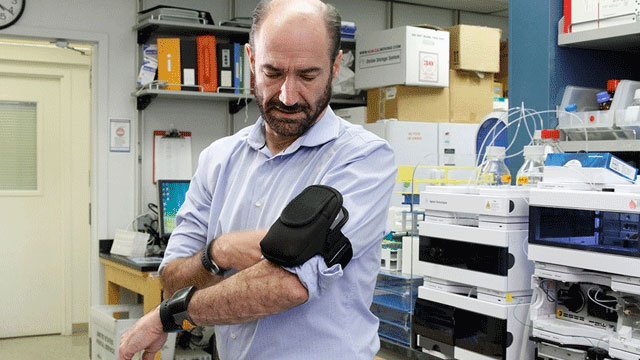Everyone has a unique 'universe' that revolves around him, like a fingerprint
The universe around each of us is unique. It is called the environmental system, referring to what we are exposed to at the molecular level.
Bacteria, chemicals, fungi, microscopic organisms, . create an invisible universe that always surrounds us, following us from birth to old age.
This universe is called the "environment" (exposome) , referring to what we must touch (expose). Scientists have recently dug into this environment and have many interesting discoveries.

The universe around each of us is unique.
"Human health is influenced by two factors: DNA and living environment, " said geneticist Michael Snyder, a member of the research team.
"People have identified large-scale indicators such as environmental pollution, but no one has studied exposure, chemical and biological exposures at the individual level. We do not yet know the broad environment. how big and what's in it ".
To study each individual's environmental system, scientists wear small air measurement devices into the hands of 15 volunteers. Some volunteers wear for several weeks, some wear for several months, the rest, including Snyder, wear for 2 years.

Scientist wears an air measuring device.
This device acts as a vacuum cleaner, absorbing what is hovering around the body. It indicates what a person has been exposed to during a certain period of time. Follow the volunteers, the device collects results from 66 different locations.
The research team then analyzed the DNA and RNA of the particles collected, then conducted chemical experiments to determine which organisms they belong to. As a result, they built a database of 40,000 different creatures in the environment around the volunteers.
"For each individual, we can make a list of what is exposed by that person," Snyder said.
According to Snyder, their environment will never be the same, even if they live right next to each other. Even exposed toxic substances are not the same.
Through research, Snyder wants to understand how these small, invisible elements affect human health. He thinks it can be developed into a smart watch that people can wear and test their environmental systems.
The study was published in the journal Cell.
- Develop 'universal' fingerprints, unlock all phones
- Technology of 2015: Fingerprint sensor
- What is fingerprint sensor? What effect does it have on iPhone 5S
- Fingerprint lock
- Will fingerprints change after we die? The answer surprised everyone!
- Fingerprint recognition for 30 minutes
- The first notebook in the world integrates fingerprint security
- Pay through the fingerprint
- Pay with fingerprints
- Finger wallet
- If you own a fingerprint of this type, you are born with a rare talent
- Fingerprint identification chip is 0.2mm thick
 'Fine laughs' - Scary and painful torture in ancient times
'Fine laughs' - Scary and painful torture in ancient times The sequence of numbers 142857 of the Egyptian pyramids is known as the strangest number in the world - Why?
The sequence of numbers 142857 of the Egyptian pyramids is known as the strangest number in the world - Why? History of the iron
History of the iron What is alum?
What is alum?